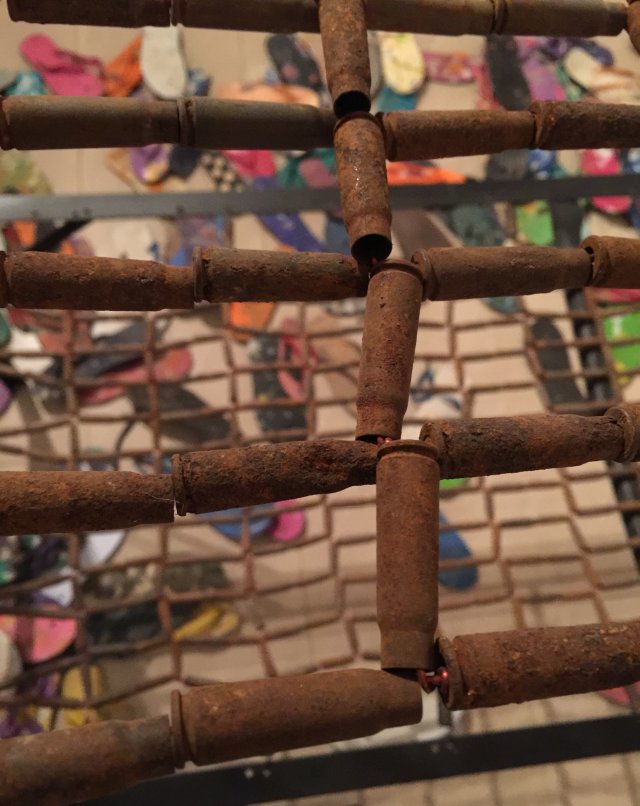Ndidi Dike / Pernod Ricard Fellowship 2017
In residency in June, July and August 2017
Ndidi Dike (b. London 1960), spent her early years in England, She studied painting, majoring in mixed media painting in the University of Nigeria Nsukka where she obtained a BA degree in1984. She is a visual artist working in a variety of media including installation, sculpture, mixed media painting and more recently lense based media and video. Teaching herself to sculpt, she has established herself as one of the leading contemporary artists working on the continent, with well over a decade of transgressive sculptural practice. In 2004 she revisited painting in her work : her professional methodology is to locate the appropriate artistic strategy that best suits the subject of contemplation at that moment.. In order to do so, she uses her research of a particular theme or topic. These themes include slavery, consumerism, globalization, urbanism, Nigerian visual culture, art history, cross border/country migration, multi culturalism, post-colonial, studies,identity and contemporary politics. She runs a professional studio in Lagos and has exhibited internationally.

- "How Much Am I Worth?" (details), "State Of The Nation" solo show, National Museum Onikan, Lagos, February 2016
STATEMENT OF INTENT
“One main interest of my artistic work is on the pre and post-colonial histories and legacies of resource control that have been shaping the African continent (or: the Global South) politically, economically and socially. The planned project seeks to discuss these issues by focusing on the Democratic Republic of Congo, its past and present. The project will give contextual, historical and visual understanding of King Leopold II of Belgium, his reign of terror and maiming in his country’s colony of DRC. He controlled and plundered human and natural resources of that country through the extraction of rubber latex, the profit of which funded and built the economy of Brussels (1884-late20th century). Later on in the history of DRC, diamonds were illegally mined and smuggled abroad by rebel movements to finance wars against “legitimate” government. The Kimberley Process was founded to prevent this flow of blood diamonds. In addition, Coltan, a natural precious mineral resource of DRC was also being illegally mined and smuggled by farmers, youths and children with attenuating personal and environmental circumstances. This project’s intent is to conduct an in-depth research with a broad range of institutions that will ultimately, visually materialize the axis of memory both literally and figuratively using archival footage, photographs and other data, such as the Musée du Quai Branly - Jacques Chirac and art academy archives.
This project is designed as a continental homage and memory to the estimated millions of men, women and children who have died in the guise of resource control and natural resource extraction industry and conflict minerals in their country, and yet remain at the edges of contemporary consciousness.”
Partager